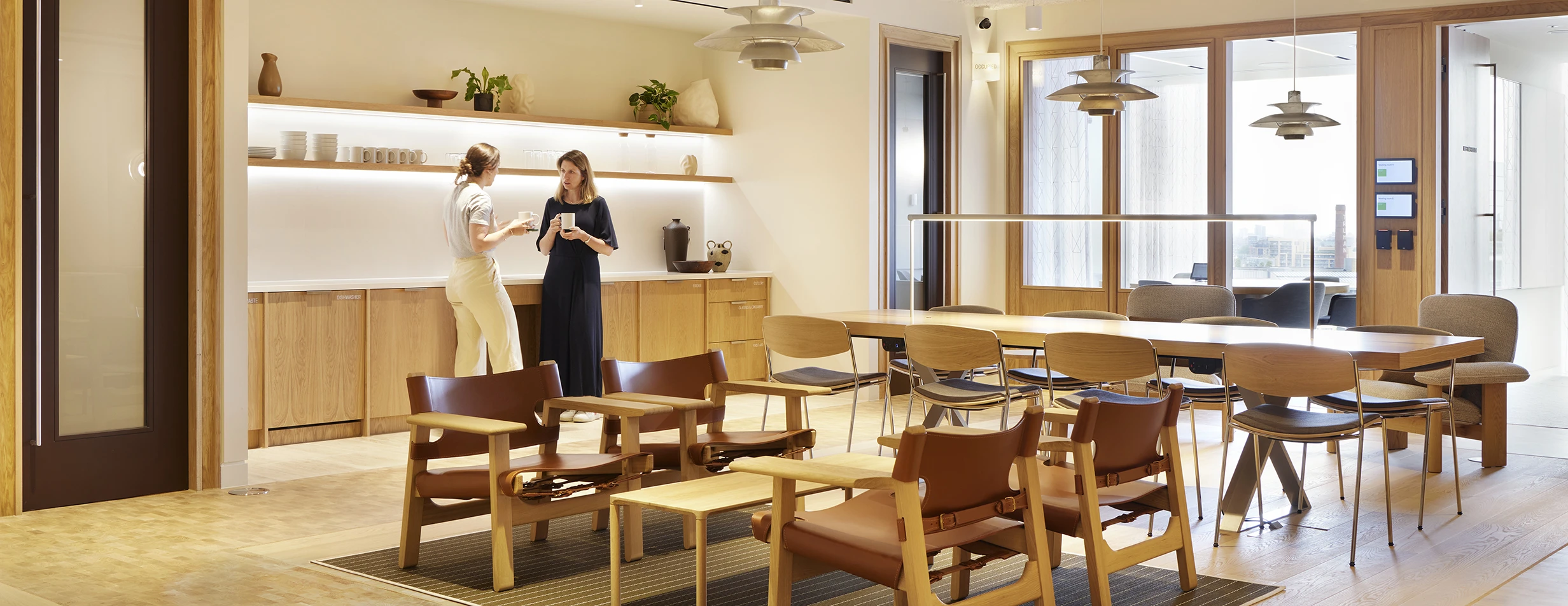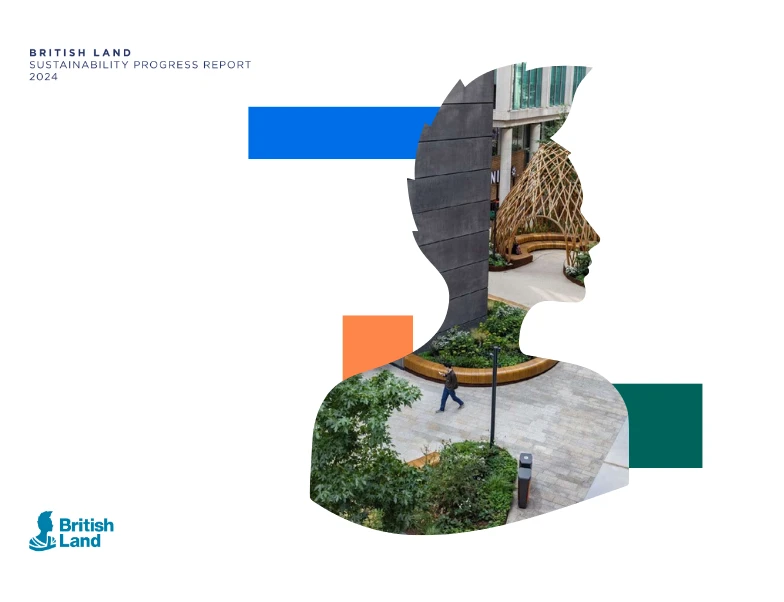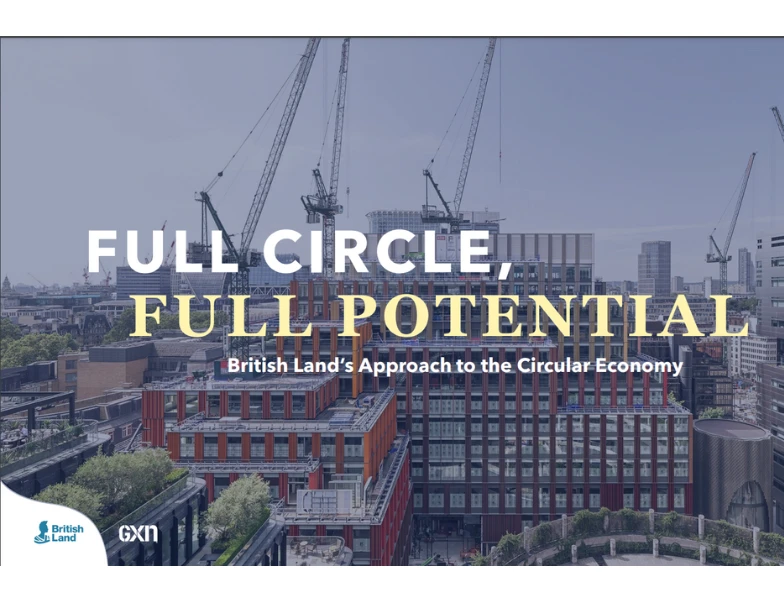A sustainable fit out means redesigning or refurbishing a workplace in a way that’s environmentally and socially responsible. This includes prioritising materials and processes to reduce waste, cut carbon and improve energy efficiency, while also promoting wellbeing and productivity for people working there. Our data shows that the best sustainable fit outs deliver commercial returns, along with environmental and social outcomes – letting faster, adding value for customers, reducing embodied carbon and boosting local economies.
Building on the success of our updated Sustainability Brief for our Places, launched last year, we’re now engaging with colleagues, suppliers and industry experts on a new Sustainable Fit Out Brief, due to launch in Summer 2025. Find out more and register your interest below.
Reducing whole life carbon
Industry statistics show that fit outs can contribute 20–30% of a commercial building’s whole life carbon emissions. Why so high? A typical building is designed for 60 years but many offices are refitted every eight years, and manufacturing, transporting and installing all that new flooring, furniture, lighting and kitchens generates a lot of embodied carbon.
On one of our early low-carbon fit outs at 338 Euston Road, Regent’s Place, we worked with partners to remanufacture nearly 250 items of used furniture to perform and look as good as new. This reduced upfront embodied carbon, let six months faster than floors fitted out conventionally and provided customers with attractive, fully fitted Cat B space for the same cost as basic Cat A.
Since then, we’ve continued to drive progress. In the last year alone, we’ve partnered with suppliers on 10 fit outs across over 15,000m2 – measuring the embodied carbon impact of every fit out. Interventions range from implementing lower carbon alternatives and reusing materials, to prioritising local employment and spending with small and medium-sized enterprises (SMEs), which research shows has a greater local economic impact than spending with large organisations.
Upcoming Sustainable Fit Out Brief
Leveraging our position to bring different experts together, we’re engaging with contractors, designers, furniture suppliers and industry experts to consolidate the latest best practice guidance and lessons from across our portfolio. Our upcoming Sustainable Fit Out Brief will set a higher standard for the industry, introducing even more demanding KPIs to stretch our teams and supply chain further and providing useful insights for customers fitting out their offices.
Planned stretch targets include:
- Reducing embodied carbon to 80kgCO2e/sqm.
- Retaining 75% of architectural materials and mechanical and electrical systems, and 50% of furniture where an existing fit out exists.
- 40% of construction site spend with SMEs.
- These stretch targets aim to reflect what’s possible today and where the industry could go. This is an area that’s moving quickly, with the best projects now already different to a few years ago, including greater focus on embodied carbon and the circular economy.
- Our supplier partners are supportive of our ambitions in this space. What we need now is the wider industry to up its game, so there’s a diverse supply chain to deliver the low carbon solutions needed. As we face global challenges, there’s no time to stand still.
Get notified via email when the brief is published
Case Studies
Bio-based materials at Level 10, The Broadgate Tower
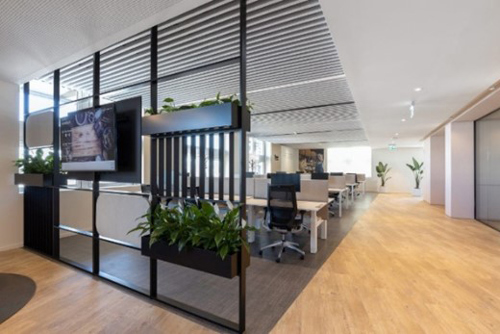
Bio-based materials used include Corkform flooring, made mainly of material recycled from the bottle-stopper industry. This provides good acoustic properties, walking comfort, thermal insulation and durability, and meets international air quality standards. When carbon sequestered by the cork oak forest is considered, Corkform’s carbon balance is -101kg CO2e/sqm. We also trialled 100% bio-based BAUX Acoustic Pulp panel, which provides good sound absorption and safety, and we are now monitoring its durability.
Low-impact fit out at Levels 4 and 22, The Broadgate Tower
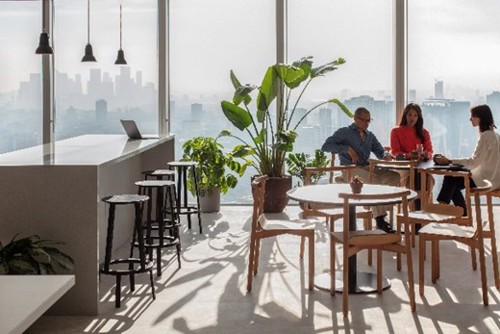
A Whole Life Carbon Assessment completed with Thirdway showed upfront embodied carbon intensity of 85kgCO₂e/sqm, in line with our internal benchmarks and outperforming the industry average of 190kgCO₂e/sqm for Cat B fit outs.i This was achieved by retaining significant volumes of furniture, lighting, doors, phone booths, raised access flooring and suspended ceilings from an existing fit out.
(i) Overbury: Counting the carbon in Cat B office fit out (2024)
Retaining and reclaiming materials at Level 3, Broadwalk House
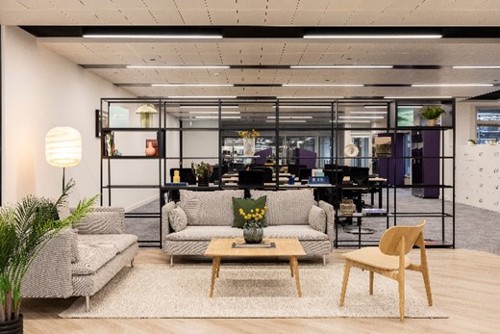
A detailed study with Cast Interiors identified opportunities to retain existing materials, leading to a low carbon fit out. The project also used reclaimed glazed partitions through Material Index’s brokering and pre-demolition audit services. Cast was connected with a donor site to adapt and relocate seven linear metres of glazed partitions into Broadwalk House. This has been an important pilot initiative to drive this at higher volumes on other projects.
Key Downloads
Explore our 2030 Sustainability Strategy: Greener Spaces, Thriving Places, Responsible Choices: www.britishland.com/sustainability


